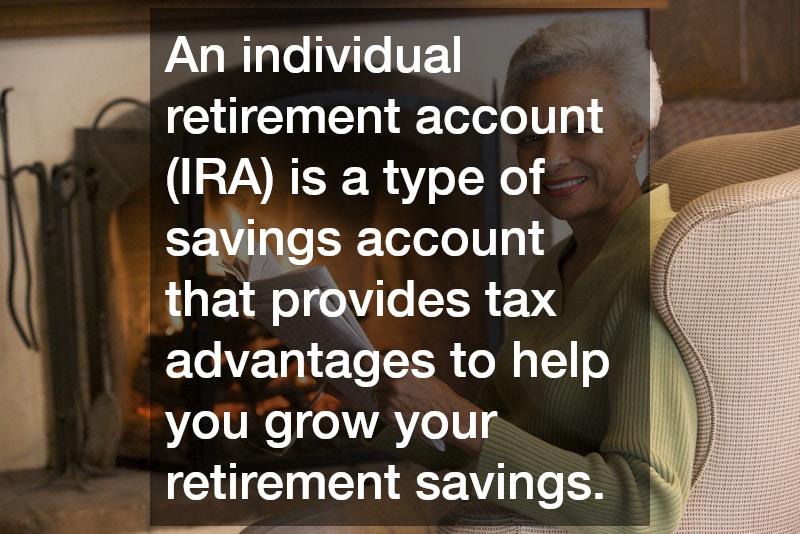
Saving for retirement is one of the most important financial goals you’ll work toward in your lifetime. One of the best tools available to help you achieve that goal is an individual retirement account (IRA). IRAs provide a tax-advantaged way to save and invest for the future, offering long-term benefits that can significantly boost your retirement savings.
In this crash course on IRAs, we’ll cover the basics, including the different types of IRAs, how they work, and which option might be best for your financial situation.
What Is an Individual Retirement Account (IRA)?
An individual retirement account (IRA) is a type of savings account that provides tax advantages to help you grow your retirement savings. Unlike regular savings accounts, IRAs are designed specifically for long-term investing, and the IRS sets limits on how much you can contribute each year. There are different types of IRAs, each with unique tax benefits, rules, and contribution limits. The two most common types are Traditional IRAs and Roth IRAs, though there are others designed for specific groups, such as SEP IRAs for the self-employed.
Types of IRAs
Let’s break down the most popular types of IRAs to help you understand the key differences:
1. Traditional IRA
A Traditional IRA allows you to contribute pre-tax dollars, meaning the money you contribute may be tax-deductible, depending on your income level and whether you have access to an employer-sponsored retirement plan like a 401(k). Your contributions and earnings in the account grow tax-deferred, meaning you won’t pay taxes until you start making withdrawals, typically in retirement.
The main advantage of a Traditional IRA is the potential for immediate tax savings. However, withdrawals from a Traditional IRA are taxed as regular income, and you must begin taking required minimum distributions (RMDs) starting at age 73.
Pros:
Contributions may be tax-deductible
Tax-deferred growth on investments
Reduces your taxable income during your working years
Cons:
Withdrawals are taxed as income
Mandatory withdrawals (RMDs) starting at age 73
2. Roth IRA
A Roth IRA differs from a Traditional IRA in how it’s taxed. With a Roth IRA, contributions are made with after-tax dollars, meaning you don’t get an immediate tax deduction. However, the benefit comes later: your contributions grow tax-free, and qualified withdrawals (in retirement) are entirely tax-free, including any investment gains.
Roth IRAs are particularly attractive to individuals who expect to be in a higher tax bracket during retirement or who prefer the certainty of tax-free withdrawals. There are no RMDs for Roth IRAs, meaning you’re not forced to take money out at any age, making it a more flexible option.
Pros:
Tax-free growth and withdrawals
No RMDs
Ideal for those who expect higher taxes in retirement
Cons:
Contributions are not tax-deductible
Income limits may restrict eligibility
3. SEP IRA
A Simplified Employee Pension (SEP) IRA is designed for self-employed individuals and small business owners. A SEP IRA allows higher contribution limits compared to Traditional and Roth IRAs, making it a great option for entrepreneurs looking to save more for retirement. Contributions to a SEP IRA are tax-deductible, and the account grows tax-deferred like a Traditional IRA.
Contribution Limits and Rules
The IRS sets annual contribution limits for IRAs, which can change from year to year. As of 2024, you can contribute up to $7,000 per year to a Traditional or Roth IRA if you’re under the age of 50. If you’re 50 or older, you can contribute an additional $1,000 as a “catch-up” contribution, for a total of $8,000.
It’s important to note that Roth IRAs have income eligibility limits. In 2024, individuals who earn more than $153,000 and couples who earn more than $228,000 are ineligible to contribute directly to a Roth IRA. However, a “backdoor Roth IRA” strategy allows high-income earners to convert Traditional IRA contributions into a Roth account, bypassing the income limits.
Choosing the Right IRA
Selecting the right IRA depends on your personal financial goals, tax situation, and future income expectations. If you expect to be in a lower tax bracket in retirement, a Traditional IRA might make sense, as you’ll get tax benefits upfront. If you believe your tax rate will be higher in retirement, or if you simply want tax-free withdrawals later in life, a Roth IRA could be a better fit.
For the self-employed or small business owners, the SEP IRA offers the flexibility to make larger contributions, allowing you to save more for your future.
How to Open an IRA
Opening an individual retirement account is relatively simple. You can open an IRA through most banks, credit unions, or online brokerage firms. Once you’ve chosen the type of IRA that suits your needs, you’ll complete a simple application and make your initial contribution. From there, you can choose how to invest your funds, whether in stocks, bonds, mutual funds, or other investment options, depending on the provider.
.




